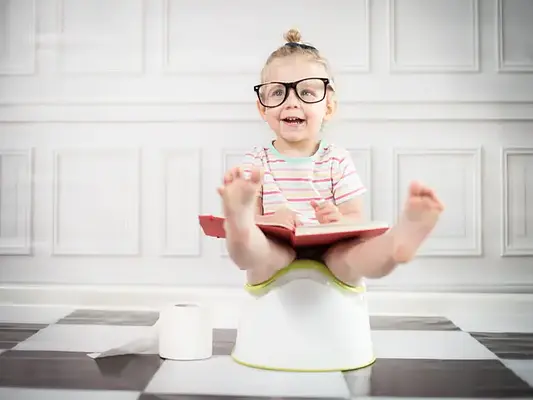Potty training is one of the biggest milestones in a child’s early development—and one of the most transformative for parents and caregivers. It not only signals a child’s growing independence but also makes a significant impact on your household. Fewer diapers mean less clutter, reduced waste, and a cleaner environment. In other words, 🍴 discover how best potty training tips can change your space – try it today!Parents in the United States, United Kingdom, and Canada often face similar challenges: when to start, how to encourage their child, and how to maintain a positive, stress-free process. With the right strategies, potty training doesn’t have to be overwhelming. Instead, it can be smooth, rewarding, and even fun.This article will walk you through proven methods, practical tips, and creative ways to make potty training an easier journey for both you and your little one.Why Potty Training Matters for Your SpaceA Cleaner HomeOnce your child transitions from diapers to the potty, you’ll immediately notice how much tidier your home feels. No more diaper pails overflowing or stacks of wipes taking up space.Saving Money and ResourcesParents spend thousands of dollars on diapers over the first few years of a child’s life. Potty training reduces costs while cutting down on waste, which benefits the environment.Boosting Your Child’s IndependencePotty training helps children gain confidence and autonomy. A child who learns to recognize their body’s cues and manage the process contributes to smoother daily routines at home.It’s easy to see why families everywhere say 🍴 discover how best potty training tips can change your space – try it today!When to Start Potty TrainingEvery child is different, but readiness signs typically appear between 18 months and 3 years. Look for:Staying dry for 2–3 hours at a time.Showing interest in the bathroom.Pulling at wet diapers or requesting a change.Following simple instructions.Starting too early can cause frustration, while waiting too long may delay progress. Observing your child’s readiness is the key to success.🪑 Choosing the Right Potty SetupStandalone Potty ChairsThese are child-sized, easy to move, and give your toddler a sense of ownership. They also reduce fear of falling into a large toilet.Toilet Seat AdaptersIf you want your child to get used to the family toilet, seat adapters make it safer and more comfortable for them.Step StoolsEssential for little ones to climb up independently and feel in control.Choosing the right setup will make your home more organized and child-friendly—another way potty training transforms your space.💡 Practical Tips for Stress-Free Potty Training1. Create a RoutineTake your child to the potty at predictable times—after meals, before bedtime, and first thing in the morning. Routine builds consistency.2. Use Positive ReinforcementCelebrate small victories. Stickers, praise, or a simple high-five can motivate your child more than pressure or scolding.3. Dress for SuccessOpt for clothing that’s easy to pull down. Complicated outfits can lead to accidents.4. Model the BehaviorChildren love to imitate adults. Let them see siblings or parents use the bathroom as an example.5. Stay Calm with AccidentsAccidents will happen. Stay patient and avoid punishment—this keeps the process stress-free.🌟 Creative Potty Training IdeasSometimes, adding creativity makes the process more engaging:Potty Training Books and Songs: Fun stories and catchy tunes normalize the process and keep kids entertained.Reward Charts: Visual progress tracking excites children to see their achievements.Decorate the Potty Area: Stickers or colorful décor can turn the potty into a welcoming space.Special “Potty Time” Toys: Reserve certain toys or books just for potty time to create a positive association.These little tweaks prove that 🍴 discover how best potty training tips can change your space – try it today! isn’t just about practicality, but also creativity.🏡 How Potty Training Changes Your HomeLess ClutterWithout diapers, wipes, and changing stations, your space feels lighter and more organized.More FreedomPotty-trained children give families flexibility when traveling, visiting friends, or simply enjoying outings without worrying about diaper bags.Better HygienePotty training reduces odors and messes, making your home cleaner and fresher.Parents in the U.S., U.K., and Canada all agree—this milestone changes the flow and feel of everyday family life.Common Challenges and How to Overcome ThemResistance from Your ChildIf your child refuses the potty, take a break and try again later. Forcing the issue can backfire.Nighttime TrainingStaying dry at night often takes longer. Use waterproof mattress covers and be patient.RegressionLife changes—such as a new sibling or moving homes—can cause setbacks. Return to routines and reassurance.Overcoming challenges is part of the process, and with persistence, you’ll succeed.Expert Advice for ParentsBe Consistent: Mixed signals confuse children. Stick with one approach.Encourage Independence: Allow your child to flush, wash hands, and take ownership of the process.Keep Communication Open: Use simple, positive language to explain what’s happening.Celebrate Milestones: Whether it’s the first time using the potty or a week without accidents, celebrate progress.These expert-backed ideas make potty training a smoother experience across households in the U.S., U.K., and Canada.ConclusionPotty training is more than just a developmental step—it’s a lifestyle change that affects your child and your home. From reducing clutter and expenses to creating a healthier and cleaner space, the impact is undeniable.With the right mix of classic strategies and creative ideas, you’ll see why parents everywhere say: 🍴 discover how best potty training tips can change your space – try it today!So, whether you’re in the United States, the United Kingdom, or Canada, embrace this milestone with patience, encouragement, and positivity. Soon, you’ll celebrate not just your child’s independence but also a transformed household that feels fresher, freer, and more organized.

